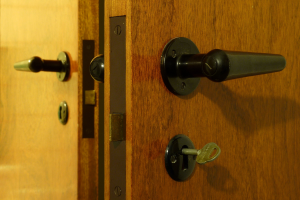 My organization is working on a keyless entry project rollout nationwide with multiple subcontractors.
My organization is working on a keyless entry project rollout nationwide with multiple subcontractors.
During the first phase of the project, the door technician will install the locking hardware and prep the door for installation of the keyless entry system and other electronic hardware depending on the site.
What’s the best way to keep the facility secure between installations?
Since focusing on electromechanical solutions we’ve seen these types of issues come up more frequently. These complications have always been an issue in the construction world, but remodels and project rollouts seem to be encountering them more and more because the facility is in use while the work is performed.
During the “Things Your Architect Doesn’t Know” series I spotlighted construction cores and the benefits of using them during the building process. At the time I was experiencing tunnel vision and only thought of this singular application. Now that the writer’s tunnel has subdued, I’m having a “duh!” moment – these are also well suited for securing a facility in the middle of a remodel, project rollout, or new hardware implementation.
At the time I wrote the article, I sat down with L.E. Nunley (LockNet’s resident key and core aficionado) to discuss the different types of temporary cores and how they work. He’s been in the locksmithing business for over 50 years and his opinion on pinning and just about anything key or core related is rarely questioned.
The Many Applications for Temporary Cores
Temporary cores are typically purchased by a site super or project manager and used by workers and other project participants throughout construction. As a rule of thumb, they are only installed on exterior doors to inhibit thieves and other criminal activity until the key system is installed. In the application of a remodel or post-construction installation they would be used the same way. Installed by door technician, a temporary core will allow the location to continue daily operations while effectively securing the facility after hours. Temporary cores are usually keyed alike so they can be reused at multiple locations during the project.
The only downside to using construction cores while the facility is in daily use is when the store is on a master system. After-hours delivery vendors, FSMs, DMs and the like would need keys to each individual store that was using temporary cores. However, when planned in advance, this usually doesn’t present much of a roadblock.
When the time comes for installation of the electronic hardware (or whatever the next phase in the project may be) the technician will simply remove the core, install the permanent hardware, and take possession of the keys from the location manager.
This one was a team effort

